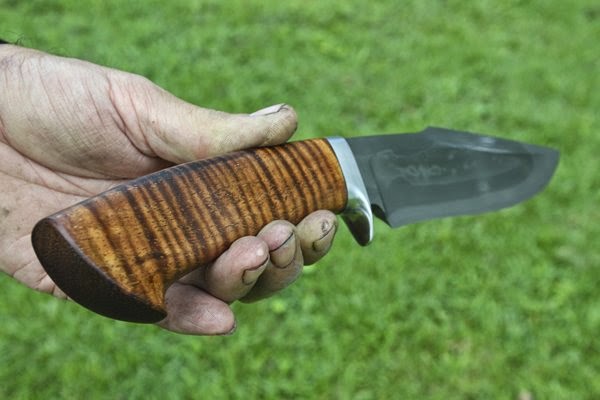The SR-71 Blackbird isn't just one of the fastest, stealthiest airplanes to ever grace the skies, it's also a very fast, stealthy little knife from Guinea Hog Forge. This new EDC (or everyday carry) is Scott's latest waterjet project, and the way we produce this knife allows us to price it lower than comparable hand-forged models.
Scott designed the SR-71 by hand, imported the sketch into a CAD file (thank you Chris Williams), and then had a fabricator cut out several knife blanks with a waterjet machine. Below is the knife shaped object that comes from back from the waterjetter.
Scott rough grinds the blank, heat treats the steel, and shapes the handle slabs. Then he final grinds the blade, Parkerizes the steel to protect it from corrosion, assembles the knife, and texturizes the handle for improved grip. Each SR-71 comes razor sharp with a lined Kydex sheath.
SR-71 Blackbird
Steel: 1084
Overall Length: 9 inches
Blade Length: 4 1/4 inches
Finish: Parkerized
Handle: Scalloped Black Micarta
Sheath: Lined Kydex
To distinguish our waterjet models from our hand-forged blades, all future waterjet designs from Guinea Hog Forge will come with the Chinese symbol for water as a part of the maker's mark. Here are a couple of videos about the SR-71. In the first, Scott shows all the features of the knife and discusses how it was produced. In the second, he takes the SR-71 for a test drive.
Thanks for looking!
Thanks for looking!








